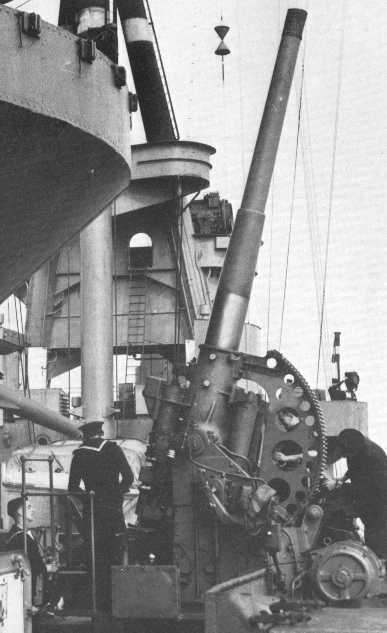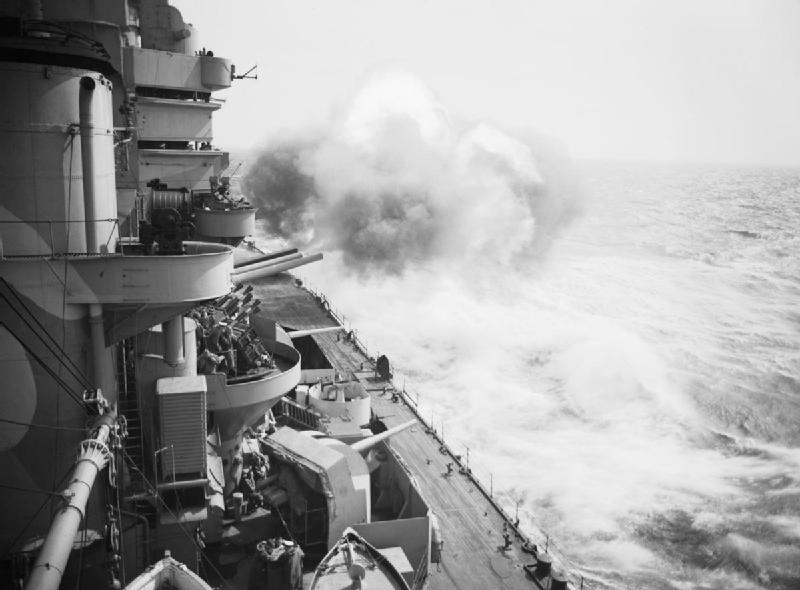|
The 4.7"/40 (12 cm) QF Mark VIII was originally developed as an AAA weapon for the "G3" and "N3" capital ships of 1920. When those ships were cancelled as a result of the Washington Naval Limitation Treaty, these weapons were then mounted on the Nelson class battleships and on converted carriers. This was the largest caliber fixed-ammunition gun ever to enter service in the Royal Navy, although the rounds for these guns were lighter and shorter than the fixed rounds developed for the later 4.5" (11 cm) guns. The fixed round for this weapon weighed a total of 74 lbs. (33.6 kg). During service evaluation, it was found that this weapon could not maintain a high rate of fire - a necessity for an AA weapon - as the heavy round rapidly wore out the gun crews. The Mark VII was constructed of a tapered inner A tube, A tube, full length wire, jacket and breech ring. Used a horizontal sliding breech mechanism that was hand operated but opened automatically after firing. The Mark VIII was constructed of a tapered inner A tube, A tube, part length wire, jacket and breech ring. Used a horizontal sliding breech mechanism that was hand operated but opened automatically after firing. The mounts were unusual for British guns in having a power rammer, which allowed faster firing at high elevations. However, the shell had to be laid in a loading tray which then had be manually pushed over before the automatic rammer operated and the breech closed. The 4.7"/40 (12 cm) Mark X was a separate ammunition version of the 4.7" (12 cm) Mark VIII. Only one of these guns was ever built and it was used for a few years on the submarine HMS Perseus in a 50 degree CPXV mounting. All British 4.7" guns have an actual bore diameter of 4.724" (12 cm). The data that follows is specifically for the Mark VIII except where noted. |

4.7"/40 (12 cm) QF Mark VIII on HMS Rodney
|

4.7"/40 guns on HMS Rodney in 1943
|